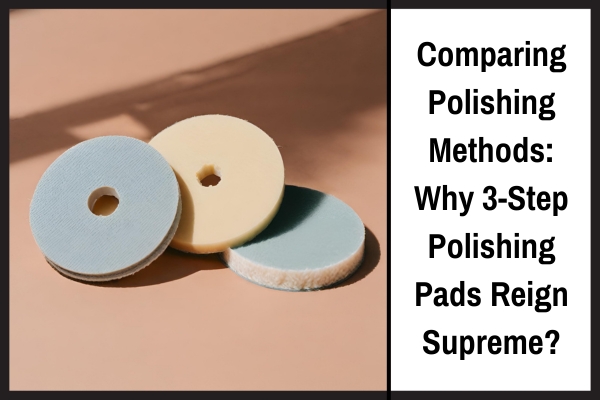
Achieving a flawless, high-gloss finish on surfaces such as marble, granite, or concrete is a common goal in various industries, from construction to home improvement. While several methods exist, 3-step polishing pads have emerged as a superior choice due to their efficiency and exceptional results. This comparison will explore various polishing methods and explore why 3-step polishing pads reign supreme.
The Importance of Polishing
Enhanced Aesthetics
Polishing enhances the aesthetics of surfaces, bringing out the natural beauty and luster of materials. It is crucial for achieving a smooth, reflective finish.
Surface Protection
Polishing not only improves the appearance but also provides a protective layer that can extend the lifespan of surfaces, making them more resistant to wear, stains, and damage.
Versatility
Polishing methods can be applied to various materials, including stone, concrete, metal, and even glass, making them versatile for various applications.
Common Polishing Methods
Manual Polishing Process
Process: Hand-held tools, like sandpaper or abrasive pads, are used to polish surfaces. This method requires physical effort and time.
Suitability: Ideal for small-scale projects or touch-up work.
Rotary Polishing
Process: Rotary polishing machines with abrasive pads or brushes are employed to polish surfaces. The rotation of the pad or brush creates friction to polish the material.
Suitability: Suitable for larger projects but can be challenging to control on delicate surfaces.
Chemical Polishing
Process: Chemical polishing involves applying chemical compounds to the surface, which react with the material to remove imperfections and create a polished finish.
Suitability: Effective for certain materials but may require expertise in chemical application.
The Superiority of 3-Step Polishing Pads
Efficiency
3-step polishing pads are designed to work sequentially, starting with coarse grit and progressing to finer grits. This gradual refinement process significantly reduces the time and effort required to achieve a polished finish compared to manual or rotary methods.
Consistency
These pads are engineered for uniformity. Each step in the process is precisely calibrated to remove the marks left by the previous step, ensuring a consistent, blemish-free finish across the entire surface.
Quality of Finish
3-step polishing pads deliver exceptional results, producing a high-gloss finish with minimal swirl marks or imperfections. This level of quality is challenging to achieve with other methods.
Ease of Use
These pads are user-friendly, making them accessible to professionals and DIY enthusiasts. Their straightforward, step-by-step process minimizes the learning curve.
Surface Preservation
3-step polishing pads are gentle on surfaces. The progressive grits remove material selectively, minimizing the risk of over-polishing or damaging delicate surfaces.
Versatility
These pads suit many materials, including stone, concrete, and even glass. This versatility makes them invaluable for various applications, from countertop refinishing to floor polishing.
Cost-Effectiveness
While the initial investment in 3-step polishing pads may be slightly higher than some other methods, their efficiency and superior results make them cost-effective in the long run, as they reduce labor and material costs.
Conclusion
Regarding achieving a flawless, high-gloss finish on surfaces, 3-step polishing pads outshine other polishing methods in terms of efficiency, consistency, quality, ease of use, surface preservation, versatility, and cost-effectiveness. Whether you’re a professional contractor or a DIY enthusiast, these pads offer a superior solution for enhancing the aesthetics and durability of various materials, making them the reigning choice for polishing projects of all scales.


